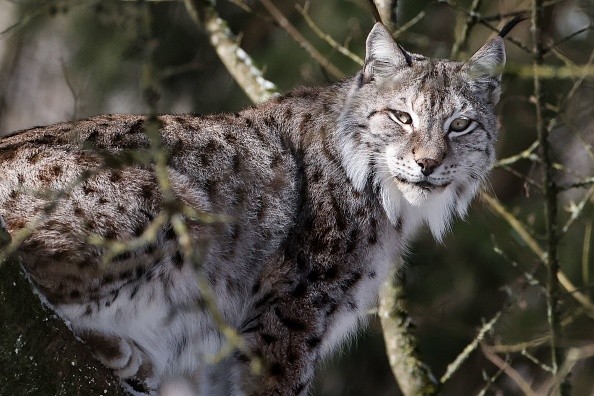A conservationist captured a video of Andean cat, the most endangered feline. In the footage, the 4kg (9lb) male was caught spray-marking the plants at the cliff's foot before slipping away over jagged rocks with his banded brown and grey tail up. It looks like a little snow leopard.

Andean Cat: America's Most Endangered Feline
Bernardo Segura, a conversationist, is happy for a lot of reasons. With fewer than 1,400 adult Andean cats alive in the wild, any sighting is a blessing. There are many reasons to be hopeful about this one, but one of them is the fact that a new colony of cats has been found in the city of Santiago, which is home to more than eight million people.
Andean cats were thought to exist only in the most remote and rugged regions of the Andes, far away from human settlements, according to The Guardian.
Camera traps were placed on a steep precipice above the La Reina neighborhood, about 2.5 kilometers (1.5 miles) from Santiago, in February after Segura noticed a high number of the cats' favorite prey - chinchilla-like rodents called mountain vizcachas - around the popular Parque Mahuida nature reserve on the outskirts of the city.
Those first glimpses of an Andean cat came to him in July. Since then, he's taken roughly 40 additional photos with his camera.
Conservation of Andean Cats
To have a great access to the number of cats will offer several opportunities for study. To better understand the behavior and distribution of these animals, researchers may return to the location of the discovery every week for a short trek. If they live in an isolated place, it's almost difficult to use remote cameras for real-time surveillance.
Key challenges in Andean cat conservation, such as the collection of scat (feces) for genetic study, may be addressed with simple access to a large and diverse population.
In their other known environments, such as the Andes and the Patagonian steppe in Argentina, it is difficult to discover this. In the past, researchers had discovered a total of five extremely dispersed populations that stretched from Peru to Argentina.
Greatest Threats to Andean Cat Population
As a conservationist, Dr. Rocío Palacios, a specialist in felines for the International Union for the Conservation of Nature (IUCN) says it's crucial to know what researchers are trying to preserve.
Andean cats have just been studied for the last 20 years, thus there are still many fundamental characteristics that need to be learned. Isolated populations frequently need additional safeguards, which may be discovered by genetic analysis of the species.
Andean extraction industries like mining and fracking pose the biggest danger to big cats because they devastate their habitats and use vast quantities of water, which deplete the animals' supplies of water.
In May, Segura released a study detailing the finding of another population of Andean cats in the hilly coastal area of Valparaiso, located north of Santiago. Using the Vizcachitas mining project, which is being planned in the region, he warned of the danger it poses to the environment.
Related Article: Threatened Lynx Are Understudied by Scientists: Report
For more news, updates about Andean cats and similar topics don't forget to follow Nature World News!
© 2024 NatureWorldNews.com All rights reserved. Do not reproduce without permission.





